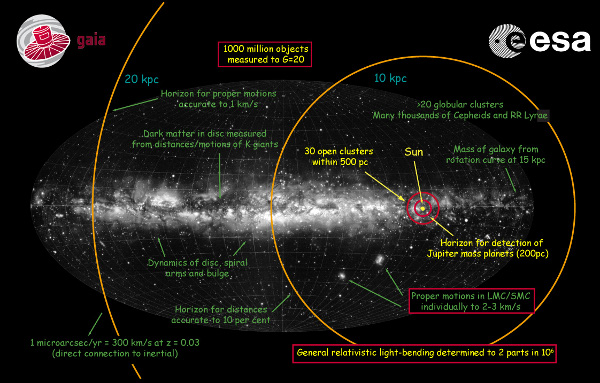The GAIA science
The data coming from Gaia will significantly improve our knowledge in many astrophysical fields. By surveying all celestial bodies down to magnitude 20, Gaia will take in a representative fraction of the Milky Way's population providing detailed information on stellar evolution and star formation in our Galaxy and revealing its formation history, current state and future evolution. The Gaia results will precisely identify relics of tidally-disrupted accretion debris, probe the distribution of dark matter, establish the luminosity function for pre-main sequence stars, detect and categorize rapid evolutionary stellar phases, place unprecedented constraints on the age, internal structure and evolution of all stellar types, establish a rigorous distance scale framework throughout the Galaxy and beyond, and classify star formation and kinematical and dynamical behaviour within the Local Group of galaxies. Gaia will map out our immediate neighbourhood in great detail and will reveal exotic objects in colossal numbers: many thousands of extra-solar planets will be discovered and their detailed orbits and masses determined; tens of thousands of brown dwarfs and white dwarfs will be identified; tens of thousands of extragalactic supernovae will be discovered; Solar System studies will receive a massive impetus through the detection of many tens of thousands of new minor planets. See figure 2.
As challenging as it is, the processing and analysis of the huge data-flow incoming from Gaia is the subject of thorough study and preparatory work by the DPAC (Data Processing and Analysis Consortium), in charge of all aspects of the Gaia data reduction. All Gaia's raw data will be translated into the mission's final product: the Gaia Catalogue, an extensive galactic census, that will be THE reference catalogue for the next decades in all galactic studies.
Fig.2: Gaia accuracies in the Galaxy and beyond (Copyright:ESA)

